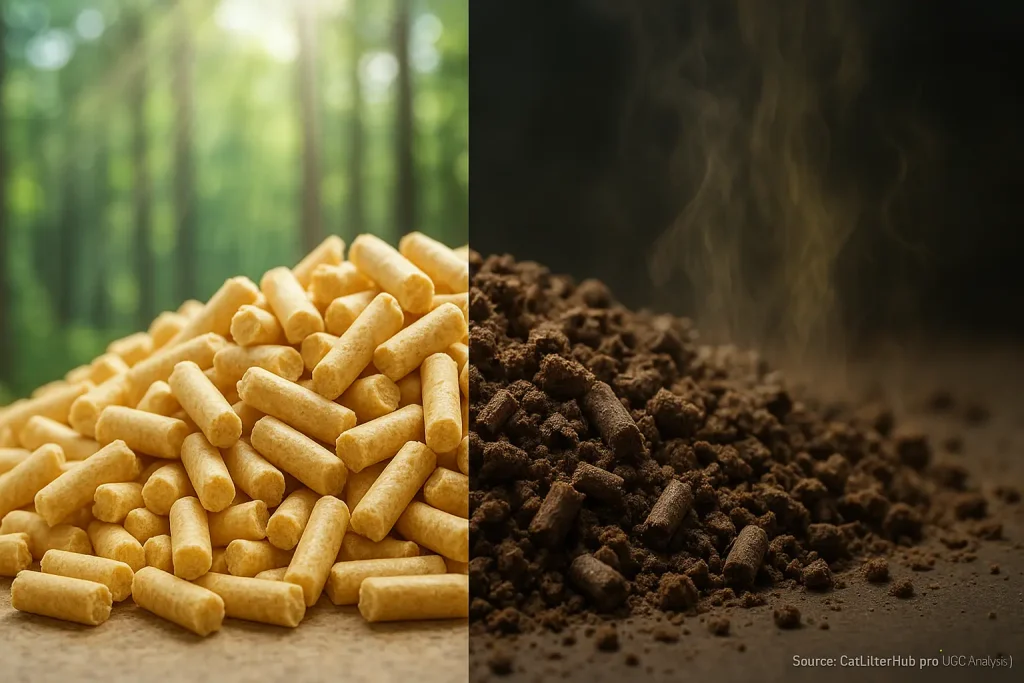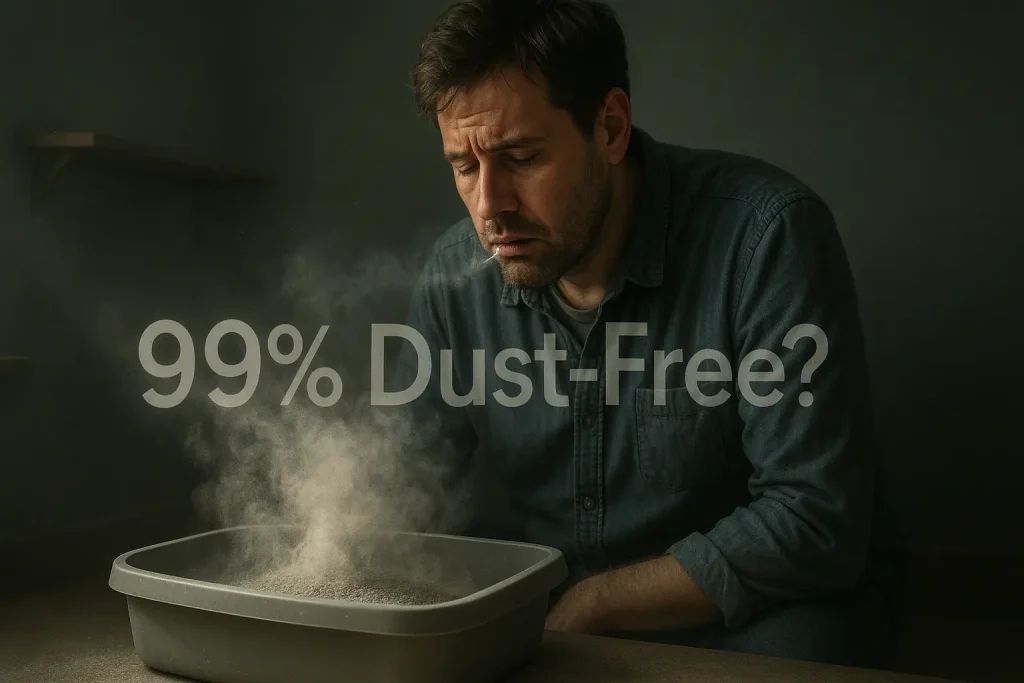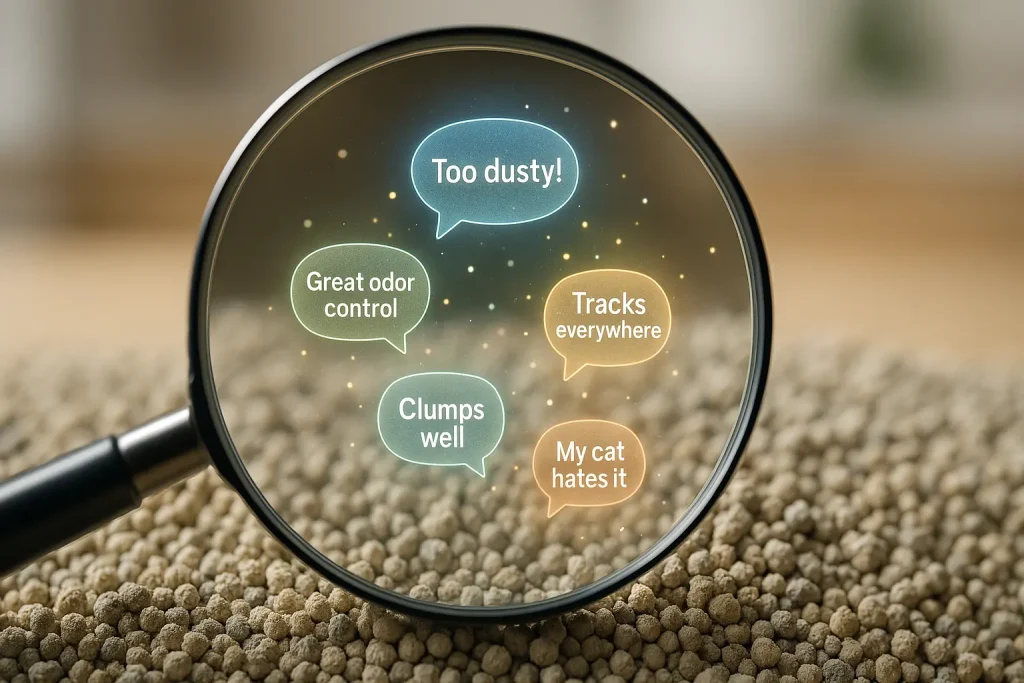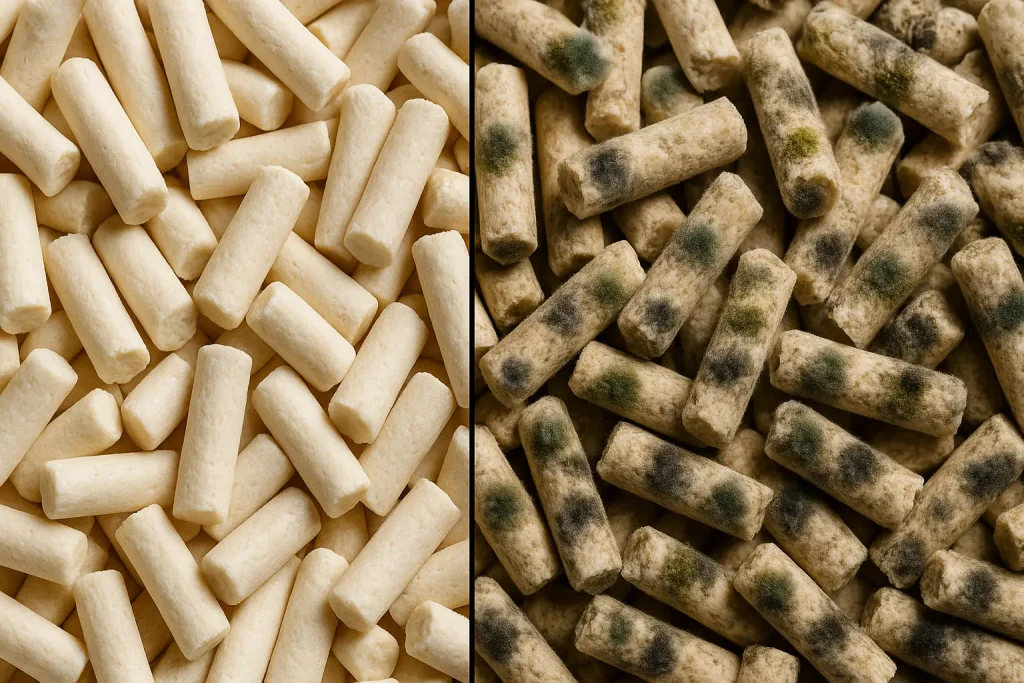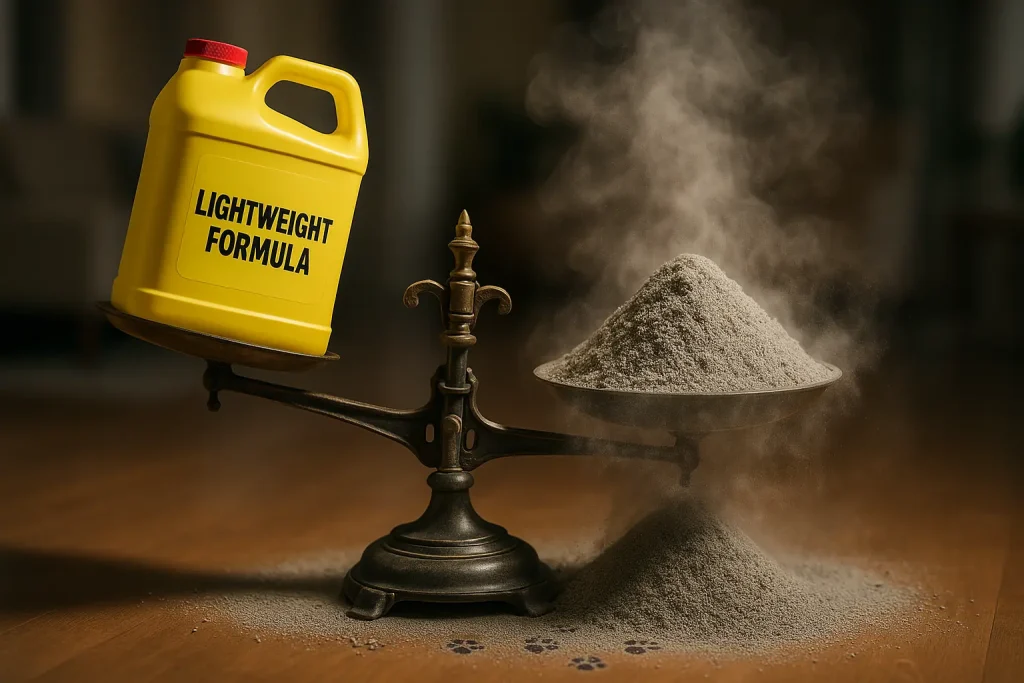The Pine Fresh Promise vs. The Stinky Reality: A User Timeline
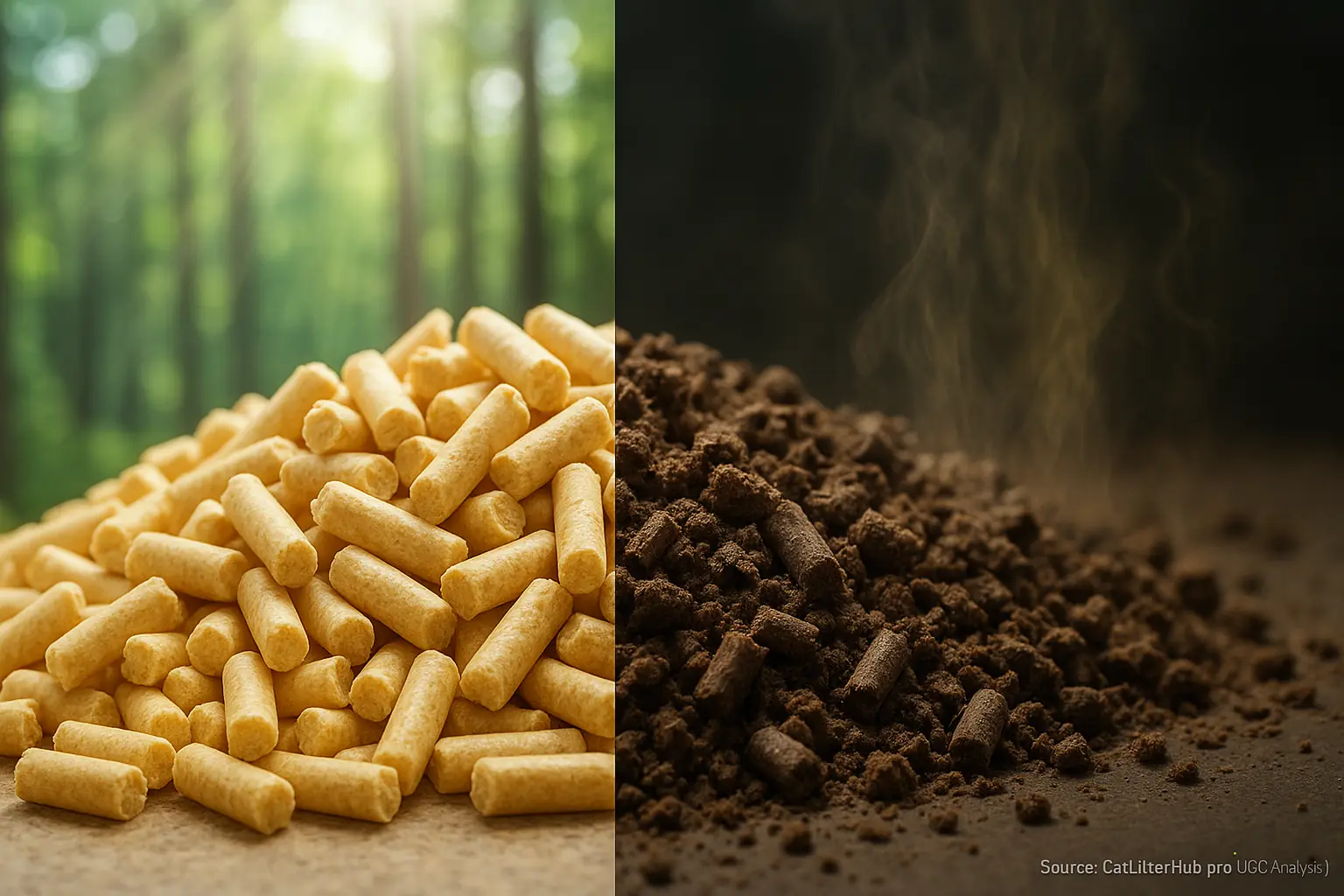
Wood pellet litters initially attract many cat owners with their natural scent. The promise of fresh pine or cedar often suggests a continuously pleasant home environment. Picture this: you open a new bag, and that delightful forest aroma briefly fills the air. A welcome change! Many hope this signals an end to persistent litter box smells.
However, user reviews frequently tell a different story over time. That initial pleasant scent? It often diminishes quickly as pellets break down. Many cat owners then report a damp, earthy smell developing instead. Worse, some discover an unwelcome ammonia odor mingling with the degrading wood.
So, what explains this common wood pellet litter experience? This scent transformation is a frequent topic in owner discussions. Our analysis of these shared experiences reveals a typical timeline for this change. This page explores that 'metamorphosis'. We detail how scent and texture can evolve based on user reports. Understanding this user-documented journey helps compare wood pellets against other litter material realities.
The Breakdown Timeline: From Solid Pellets to Dusty Sawdust (UGC Observations)
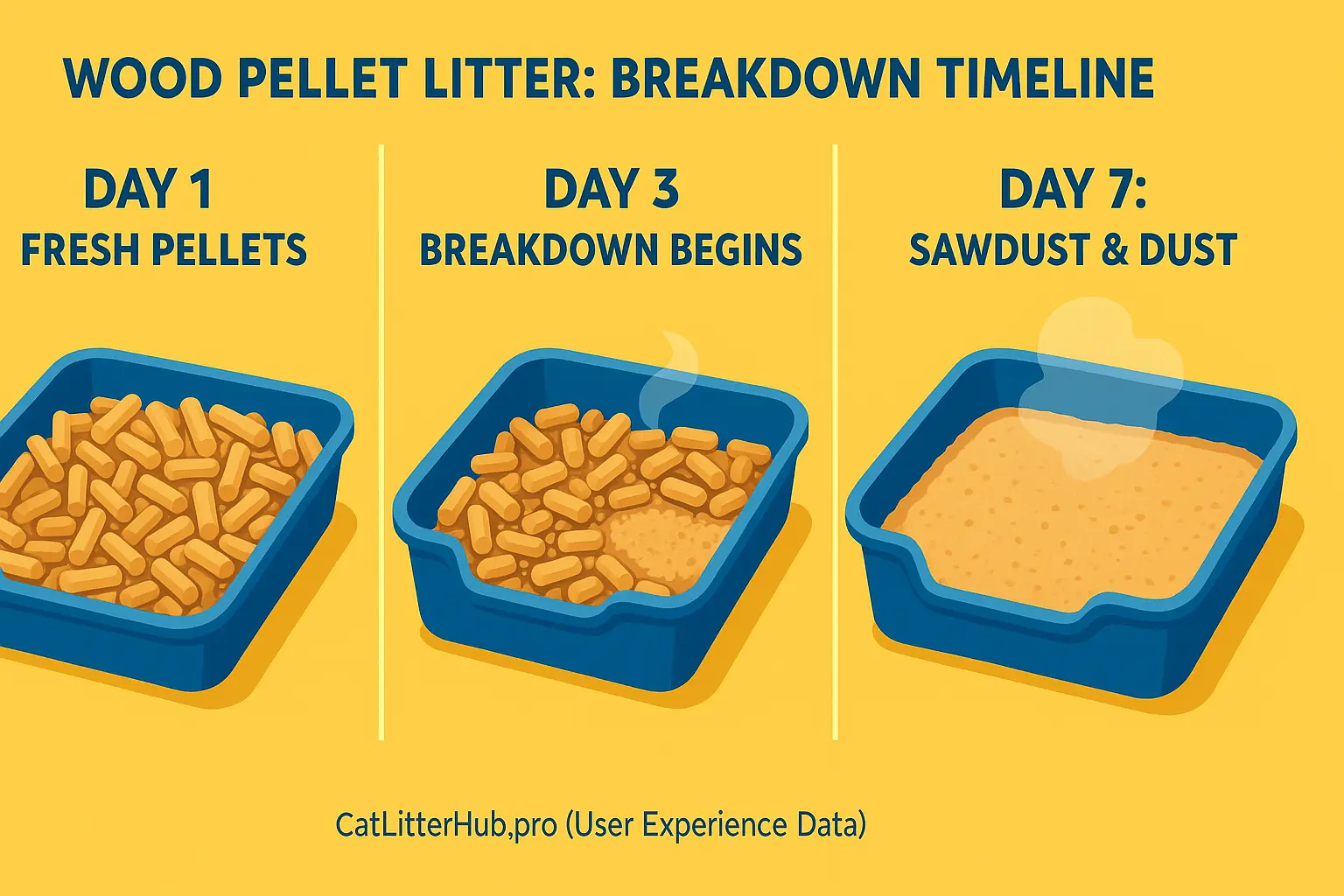
Wood pellet breakdown often starts surprisingly fast. Our analysis of user experiences indicates pine pellets, in particular, begin to crumble upon contact with moisture. Cat activity further accelerates this disintegration. Owners frequently describe a distinct textural shift. Those initially firm pellets? They often become a soft, powdery sawdust, especially in high-traffic urination spots within the litter box.
This pellet transformation directly contributes to increased airborne dust. It is a common observation, echoed in countless reviews, that this dust emerges as pellets break down. This reality can contradict the 'low-dust' marketing some wood litters feature. A frequent user sentiment: "I chose wood pellets hoping for less dust than clay, but once they degrade, it's a different beast." Some compare the fine particulate to pervasive woodshop dust.
The resulting fine sawdust, as per extensive user feedback, leads to a different type of tracking problem. While whole pellets might scatter, this fine powder clings more readily to cat fur. "Those tiny sawdust bits? They're like Velcro for fur," many users report. Owners then discover faint trails of it. These often appear on dark floors and furniture, a more insidious tracking than larger, solid pellets typically cause.
The Odor Shift Enigma: When "Natural" Scent Turns Sour (User Reports)
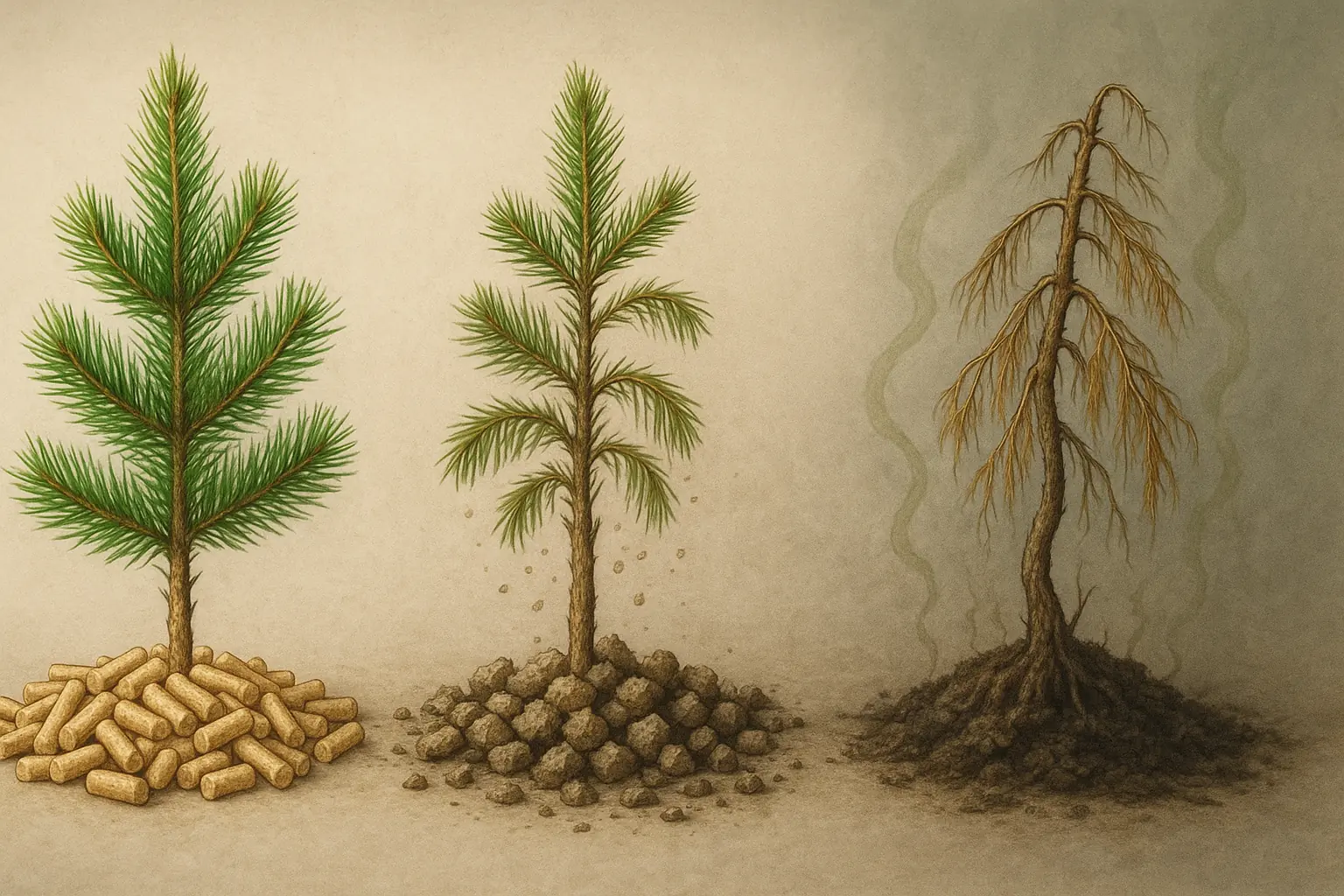
Wood pellet litter often promises a fresh start. Its natural wood scent delights many owners initially. Then, a problem. Countless user reviews describe an unwelcome odor shift after several days. That lovely pine or cedar aroma? It frequently becomes a fleeting affair, many users find. The real challenge, they report, is the different smell that creeps in. "Ammonia bomb" and "musty barn" are terms appearing in feedback when this happens.
Why this smelly transformation? User experiences directly link this odor change to pellet degradation. Pellets absorb urine. They eventually become saturated. Their odor-fighting capacity then diminishes, owners consistently observe. Disintegrated pellets, now sawdust, struggle to contain strong smells, especially when damp. Some owners express concern that wet sawdust might even promote odor-causing bacteria, a worry reflected in their shared experiences.
Is any wood type a clear winner against this shift? Some cat owners feel cedar-based pellets maintain freshness slightly longer than pine. However, our analysis of user feedback shows the eventual "turn" to an unpleasant smell is a widely reported phenomenon across most wood pellet products. This presents a persistent issue for cat households seeking lasting odor control from wood pellets. It is a common frustration echoed across many online communities.
This odor shift represents a true enigma for many wood pellet users. A pleasant beginning. An unwelcome end. The unspoken truth, revealed by collective user experience, is that natural wood scents have limitations. They may not provide sufficient long-term neutralization of potent cat urine odors. This understanding, drawn from thousands of real-world reports, helps set realistic expectations for this litter type.
Is Wood Pellet Litter Still Worth It? Weighing Pros, Cons & User Verdicts
Estimate Your Wood Litter's Scent Timeline!
Is wood pellet litter a total write-off then? Many users say no. They appreciate the initial natural aroma, the eco-friendly aspect, and less tracking with fresh pellets. These upsides keep some owners loyal.
The real decision hinges on a trade-off, user experiences reveal. You exchange those early pluses for later challenges: managing odor shifts, dust, and fine sawdust trails. Is that exchange acceptable for your home? Understanding the pellet-to-powder timeline, clarified by our tool, helps you answer that crucial question and set true expectations.
Related Insight: Pine & Cedar Resins in Wood Litter: Natural Scent or Cat Allergen? (UGC Sensitivity Reports)
Many cat owners appreciate the natural scent of wood litters. This freshness often comes directly from pine or cedar resins. These inherent wood compounds are key to their earthy aroma.
But a question emerges from widespread user feedback: are these potent natural resins always gentle on every cat? For cats that might be sensitive, this becomes an important consideration when choosing wood litters. Cat Litter Hub is analyzing owner reports on this exact issue.


